Activating over 120 aircraft, half a dozen airbases, and units from every corner of India, the Indian Air Force pounded the country’s western desert for a fortnight last month, these large-scale drills culminating in a public firepower demonstration called Vayu Shakti (literally, ‘Air Power’). The War Zone contributor Angad Singh was on hand to report on the impressive live-fire demonstration that showcased some of the most modern elements of the Indian Air Force — both in the air and on the ground.
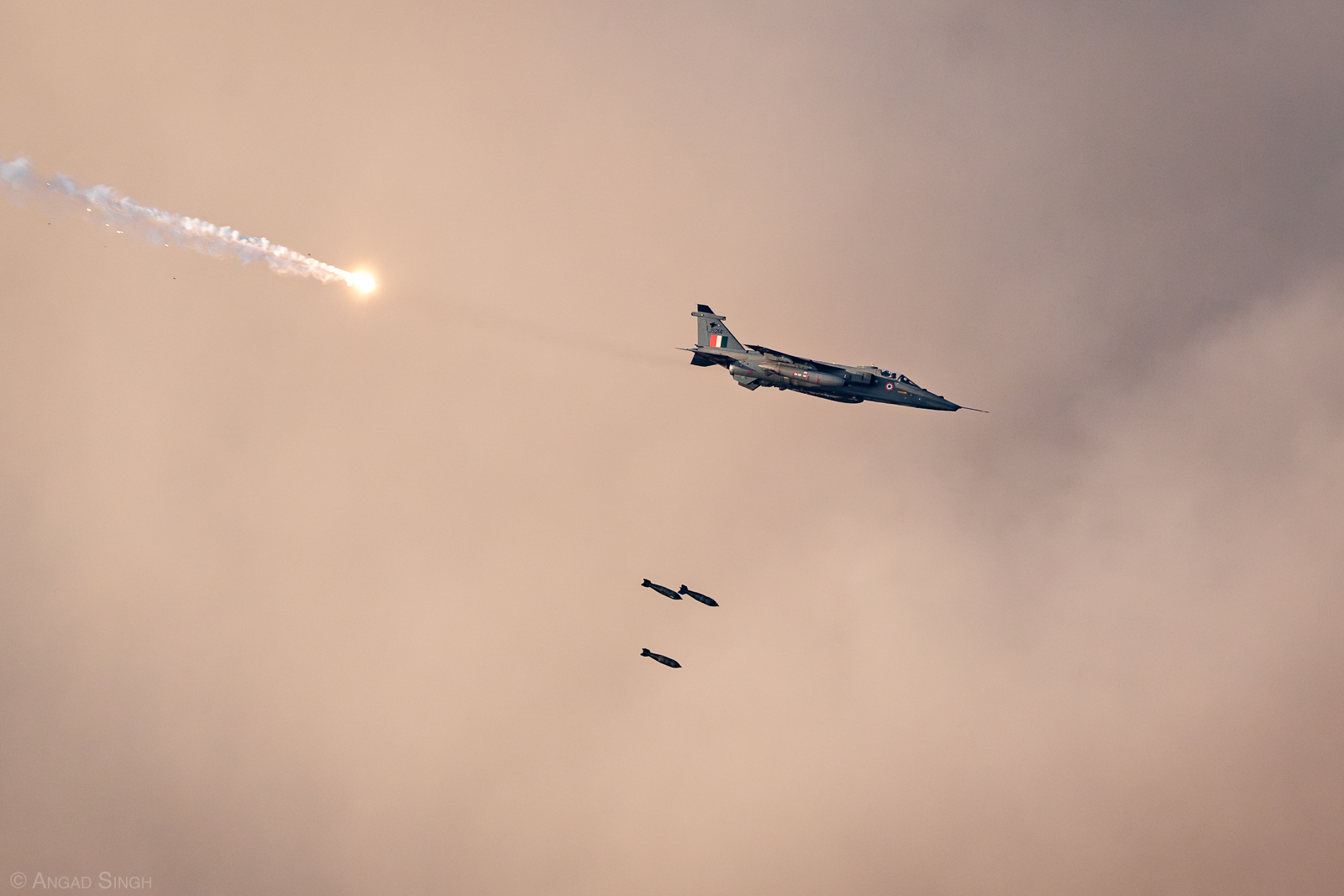
The tradition of Indian Air Force firepower demonstrations dates back to July 1953, when the IAF first carried out a public demonstration at the Tilpat range, located some 15 miles south of the capital city New Delhi. Tilpat remained home to periodic repeats every few years until March 1989, when urban expansion around the national capital made safety a serious concern. The venue was then shifted to the mammoth desert range at Pokhran, where it has been held since, with the previous Vayu Shakti demonstration taking place in 2019.
Work-up for the 2024 edition began in early February, initially with range familiarization before quickly transitioning to rehearsing for the final day, with specified roll-in and roll-out directions, attack profiles, and so on. Nearly every IAF combat aircraft type was represented, with many detached to nearby bases of South-Western Air Command (SWAC) for the duration of the exercise.
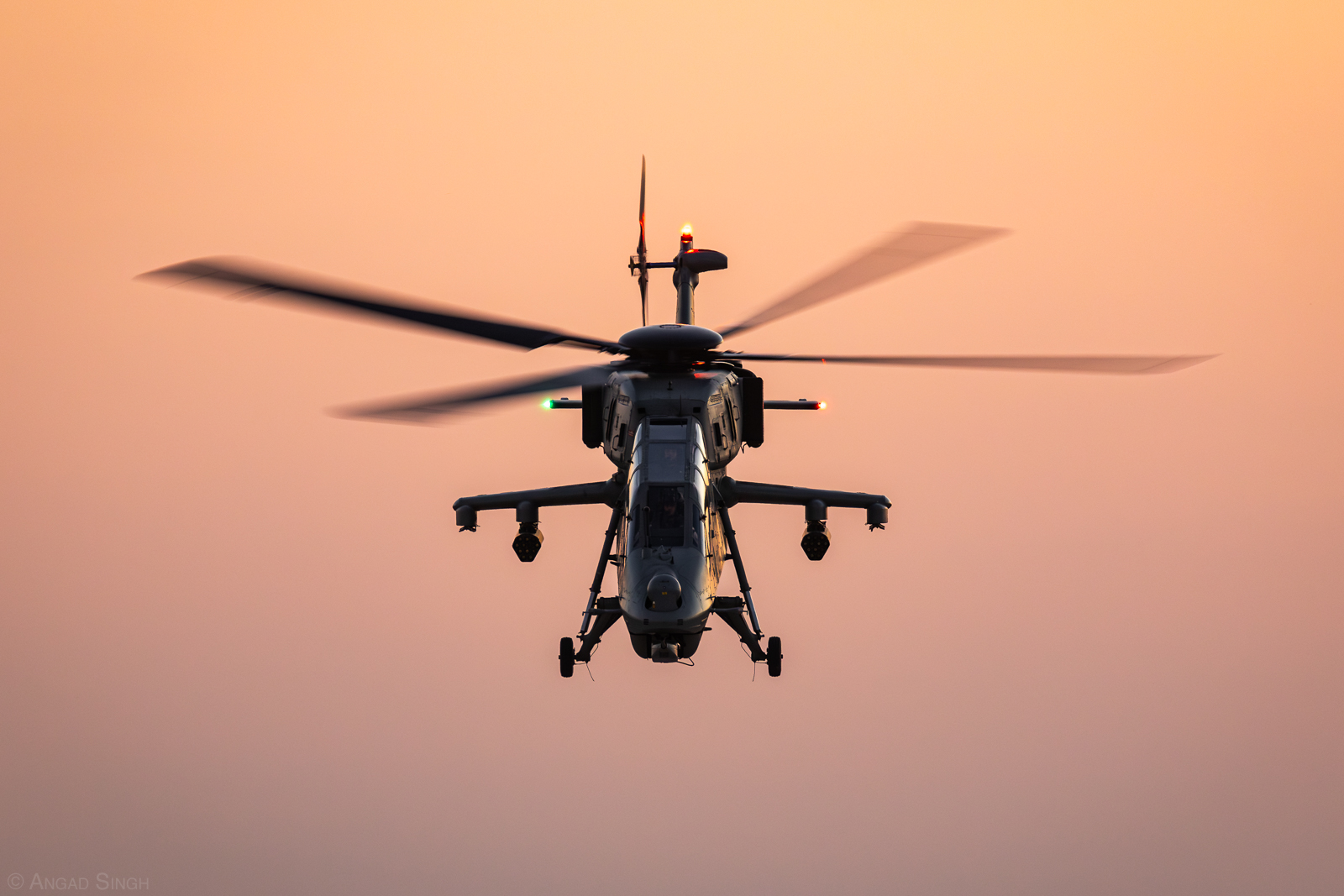
New additions for this year included the locally developed Prachand Light Combat Helicopter (LCH), AH-64E Apache, and CH-47F Chinook, the last two demonstrating New Delhi’s increasing willingness to buy new military aircraft from the United States. For the first time, the maneuvers included joint operations with the Indian Army, which sent HAL Rudra attack helicopters and BAE Systems M777 howitzers as underslung payloads delivered by IAF Chinooks.
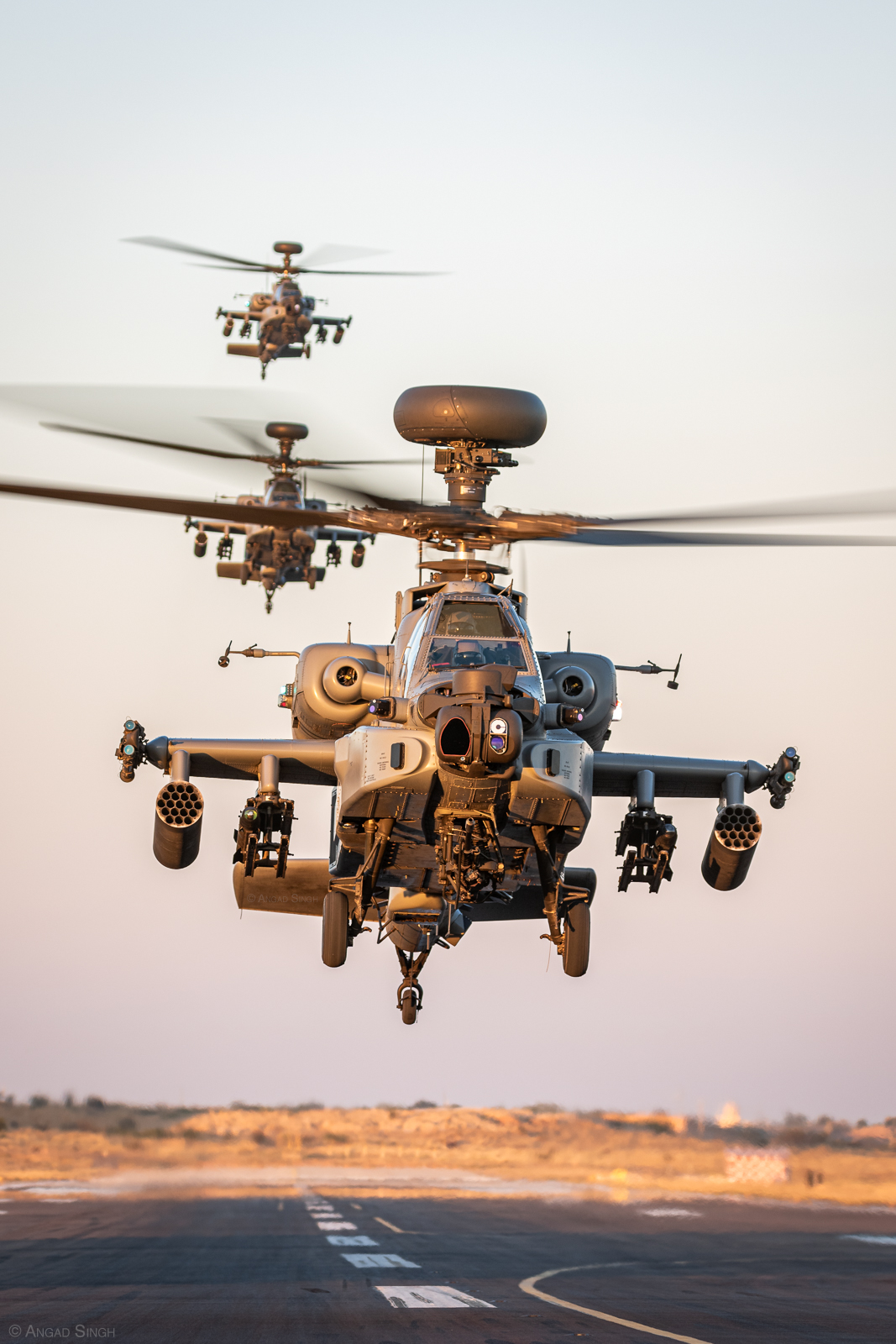
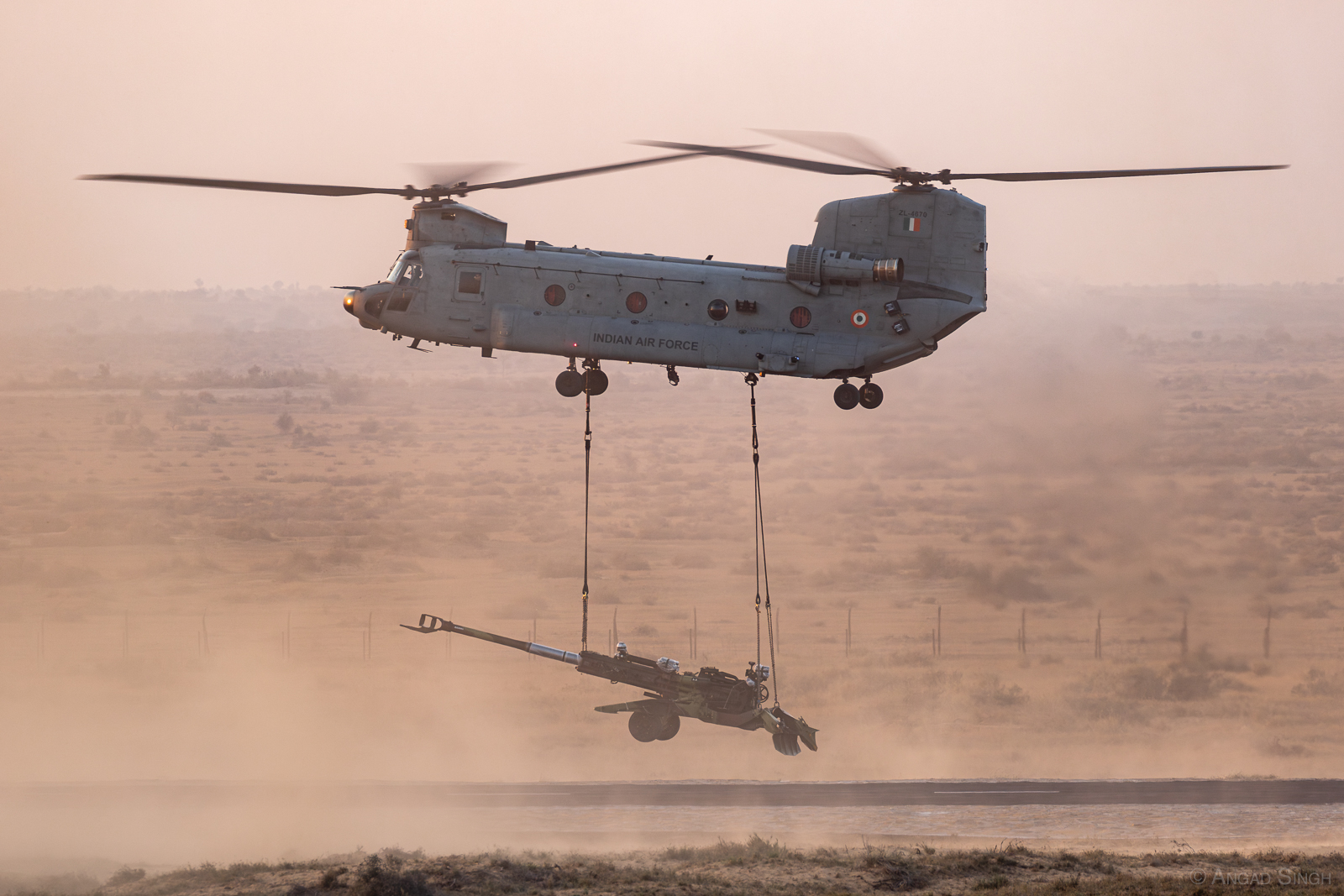
An interesting participant was the IAF’s new SAMAR (Surface-to-Air Missile for Assured Retaliation) air defense system, an in-house development that fires reconditioned R-73 (AA-11 Archer) heat-seeking air-to-air missiles from a mobile ground launcher. This also made its public debut at the exercise. Ground-launched adaptations of the R-73 have been noted elsewhere before, most notably in the hands of the Houthi militants in Yemen.
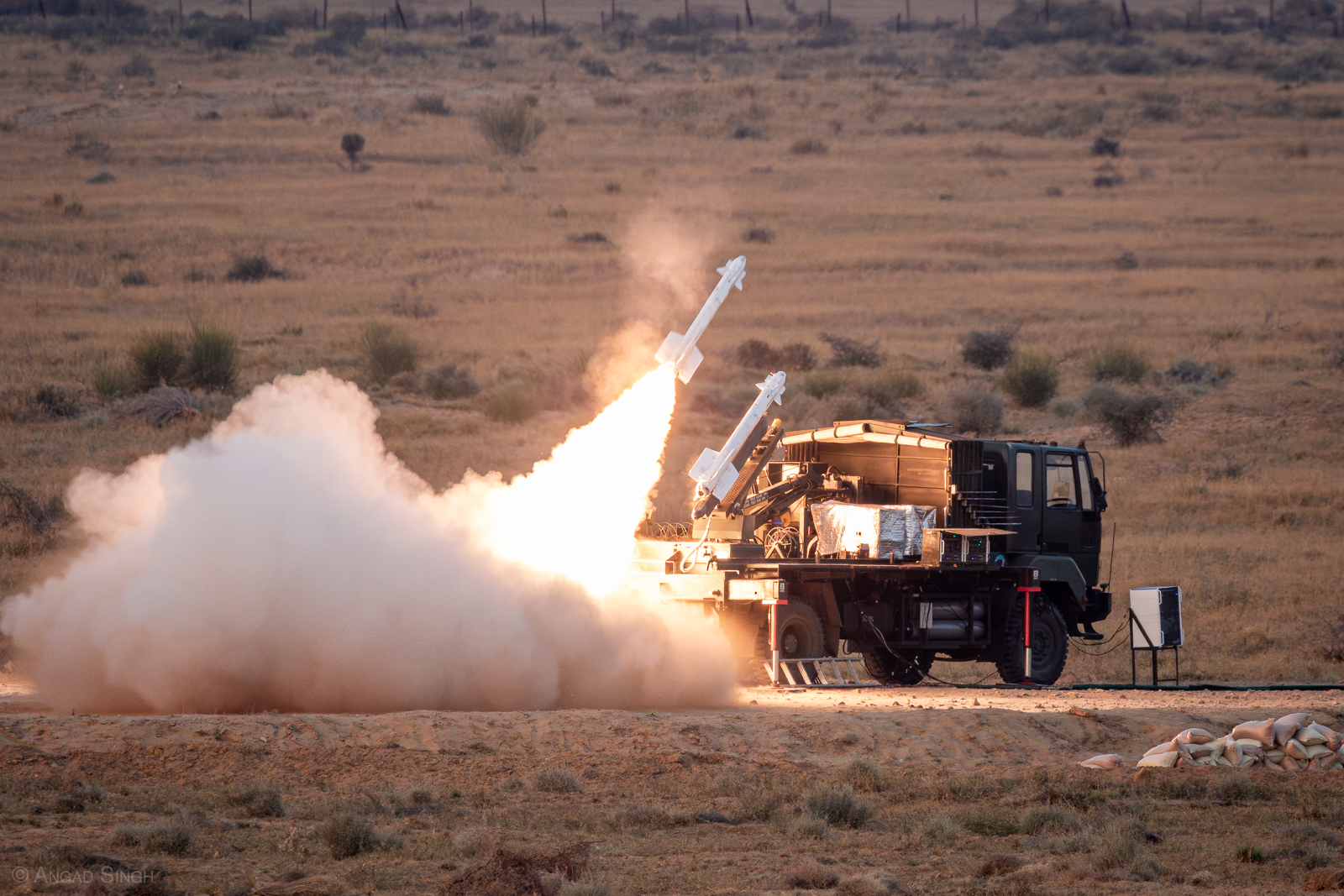
The most notable absentee from Vayu Shakti 2024 was the MiG-21 Bison. With the IAF calling time on over six decades of operating MiG-21 variants, the remaining handful of Bisons will not be shown to the public until they are retired next year, something you can read more about here.
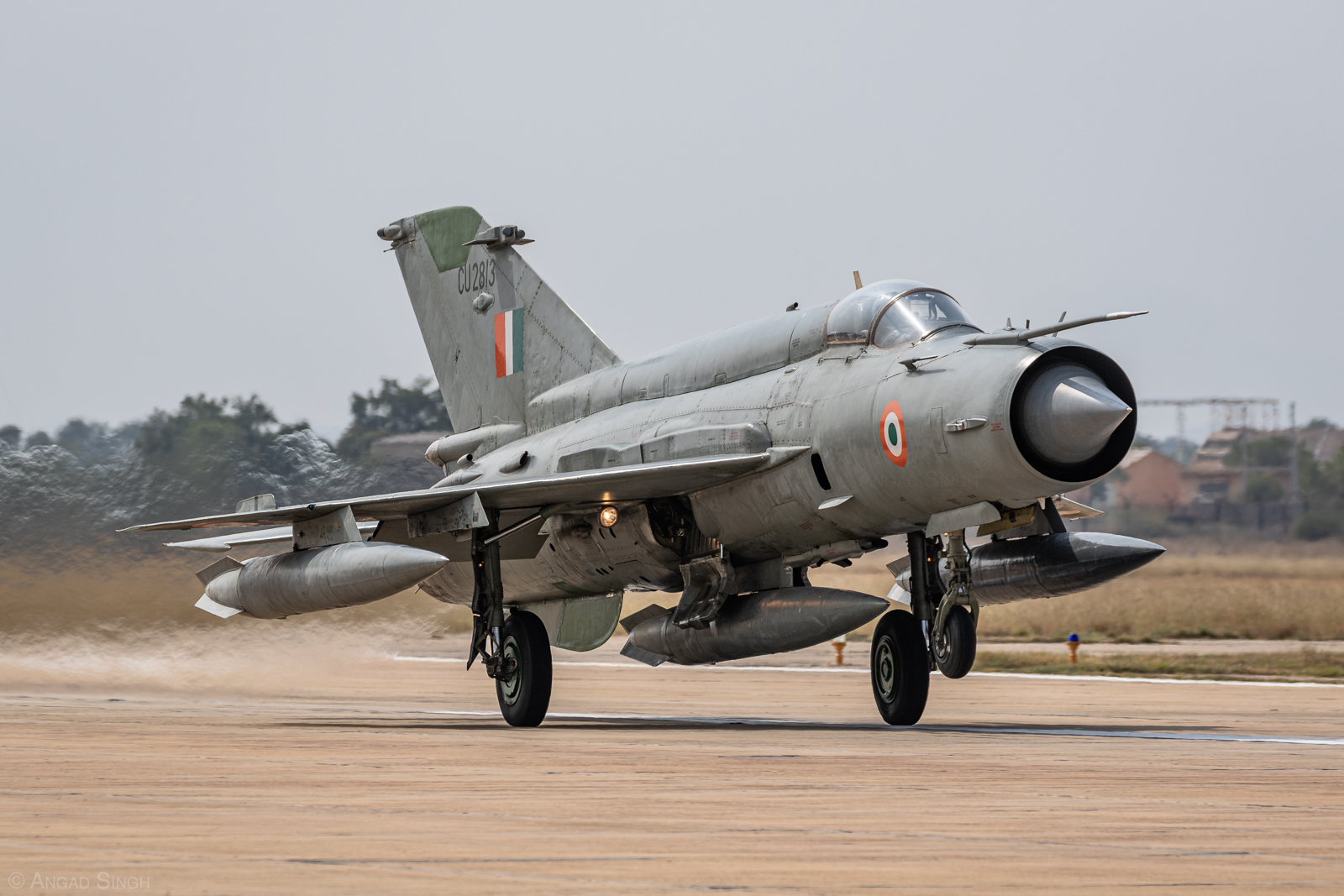
The two-hour day/night event was kicked off by a trio of HAL Chetak (locally produced Alouette III) helicopters each trooping the IAF Ensign. Moments later, a Rafale — the Indian Air Force’s newest fighter making its Vayu Shakti debut — shattered the evening calm with a low-level supersonic pass in front of the grandstand, its sonic boom heralding the action that was to follow.
A pair of upgraded DARIN II Jaguar ground-attack jets then ran in from directly ahead, capturing high-resolution imagery with their Israeli-produced RecceLite reconnaissance pods. Next, the ‘firepower’ portion began in earnest, with a pair of DARIN I Jaguars racing in from the east to deliver six 1,000-pound retarded bombs at the low levels the type is famous for. These were followed by two upgraded Mirage 2000s dropping eight 250-kilogram bombs each. Flying in from the right shortly after came a pair of Su-30MKIs, dropping 10 1,000-pound freefall bombs in total on a mock bridge target.
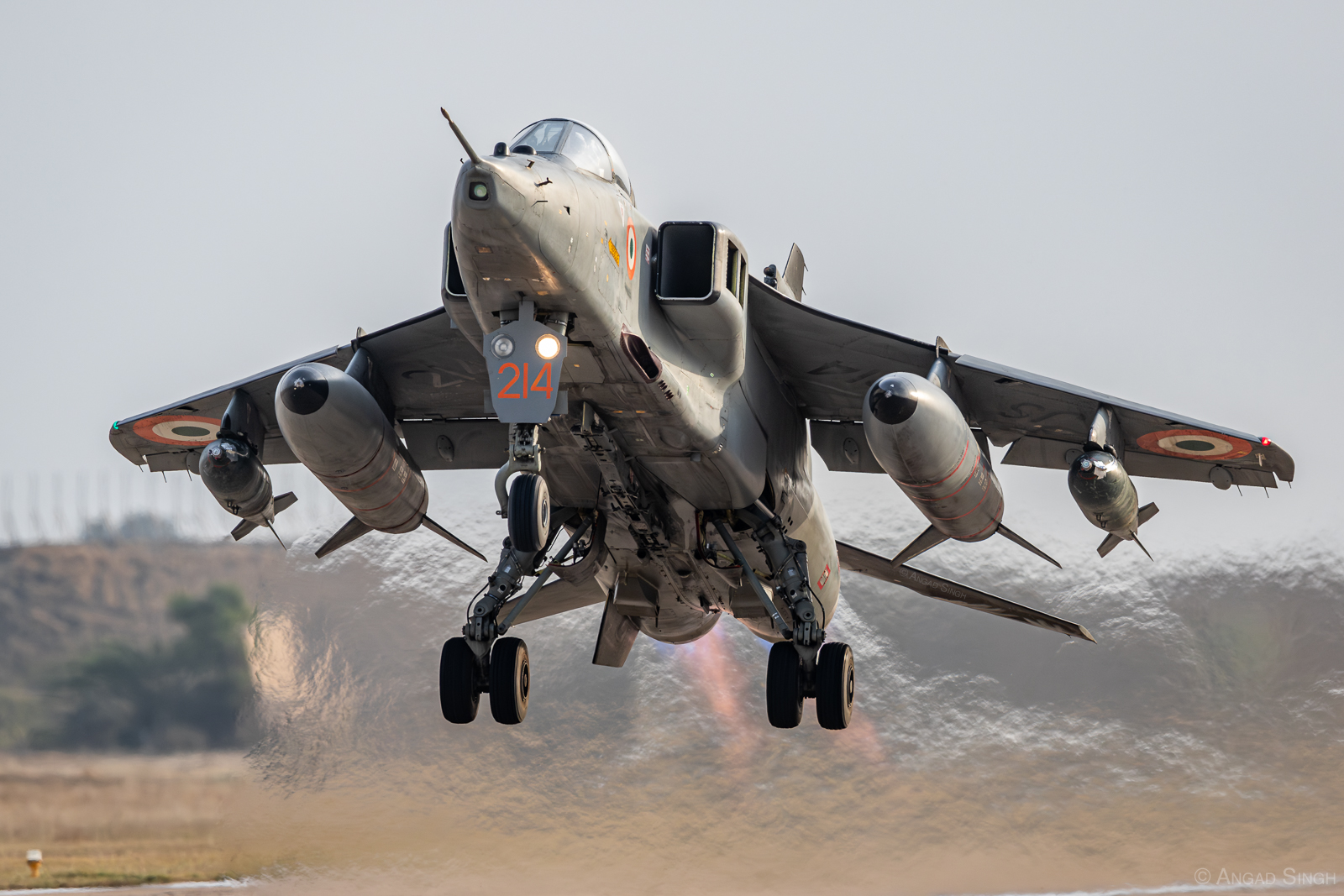
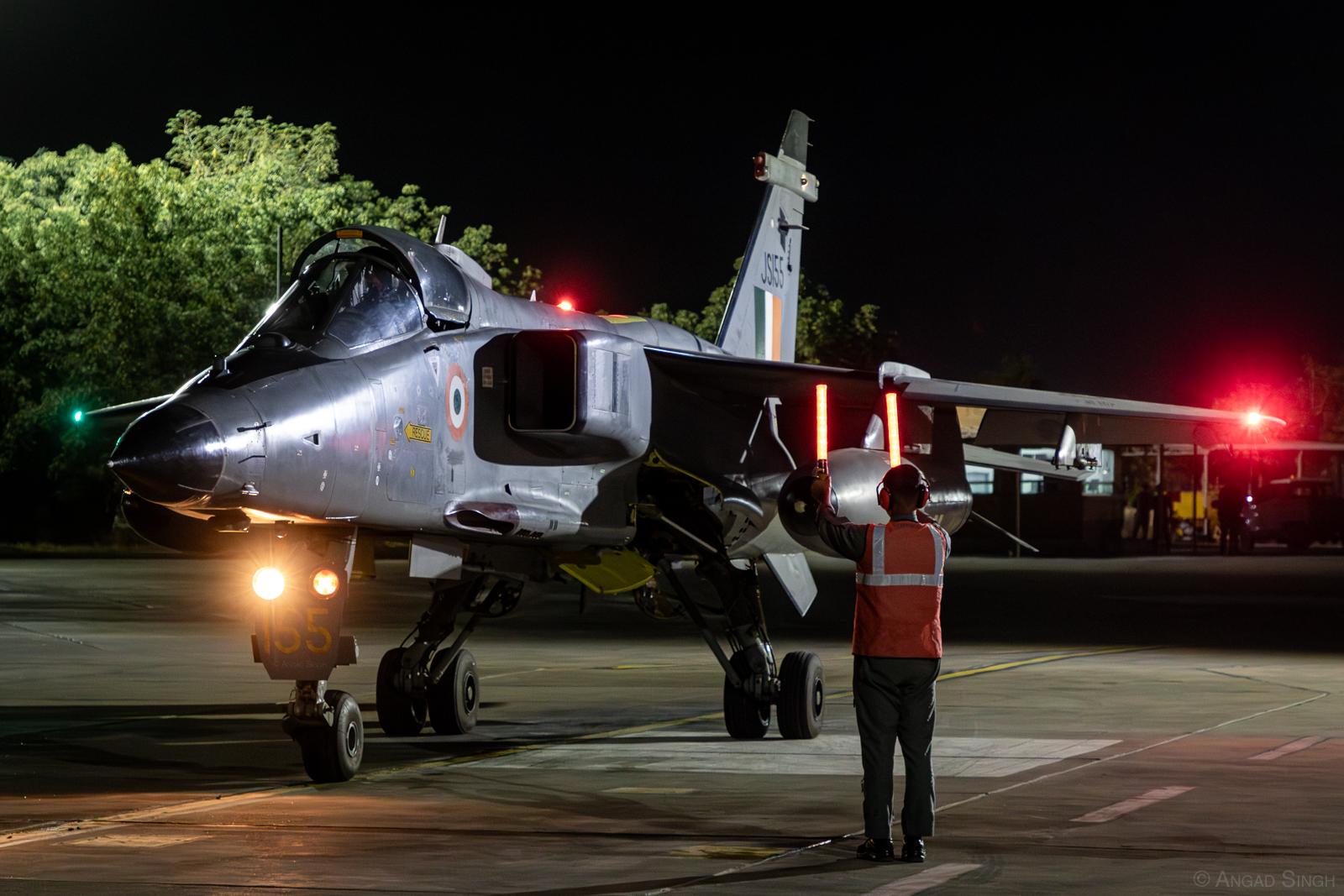
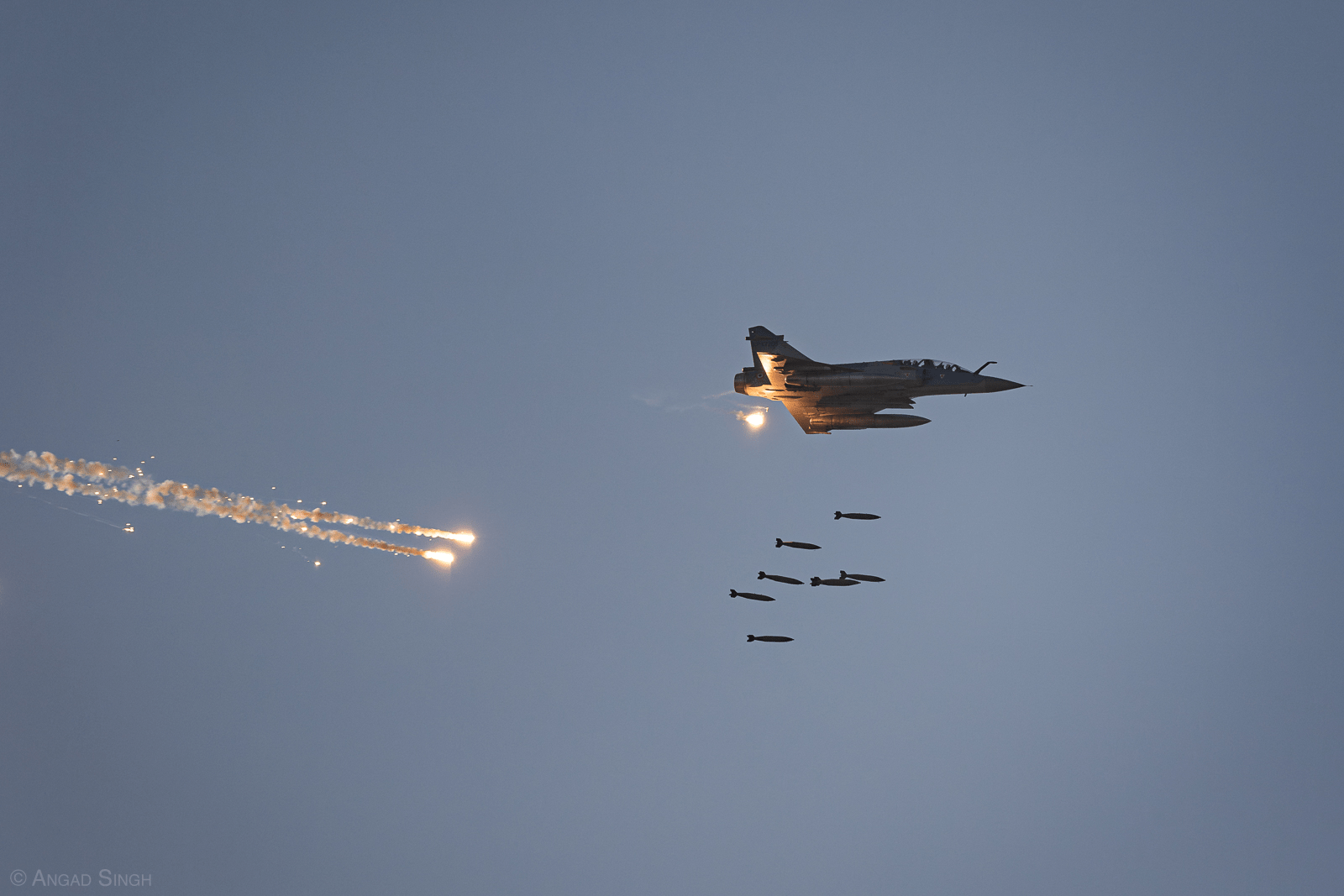
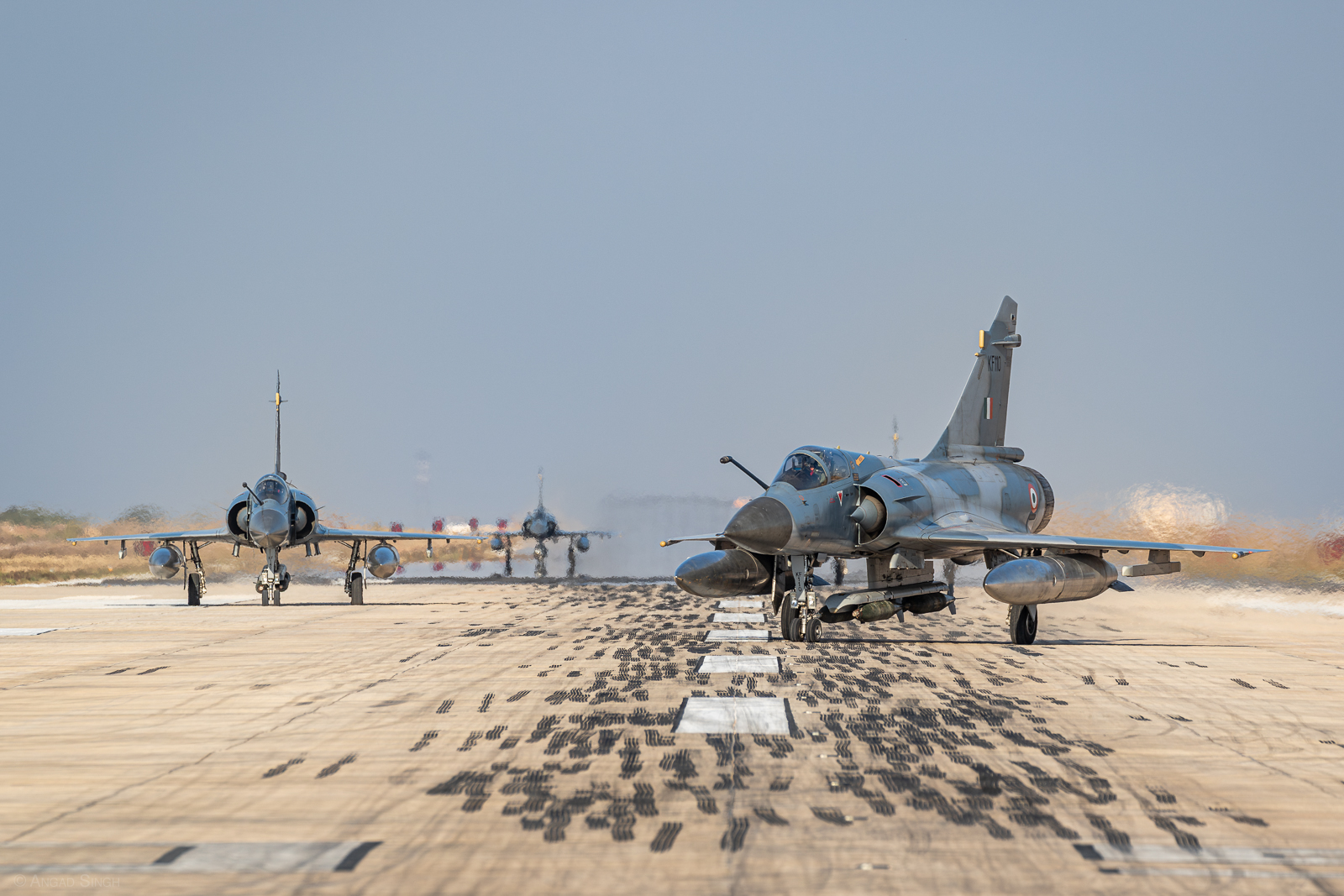
The action then switched briefly away from ground attack as a Rafale DH maneuvered in front of the grandstand and launched an MBDA MICA IR heat-seeking missile at an expendable drone target. This was followed by a lone HAL Tejas dropping a single 1,000-pound laser-guided bomb on a simulated enemy command center, with a Su-30MKI delivering the knock-out blow of five 1,000-pound unguided bombs on the same target.
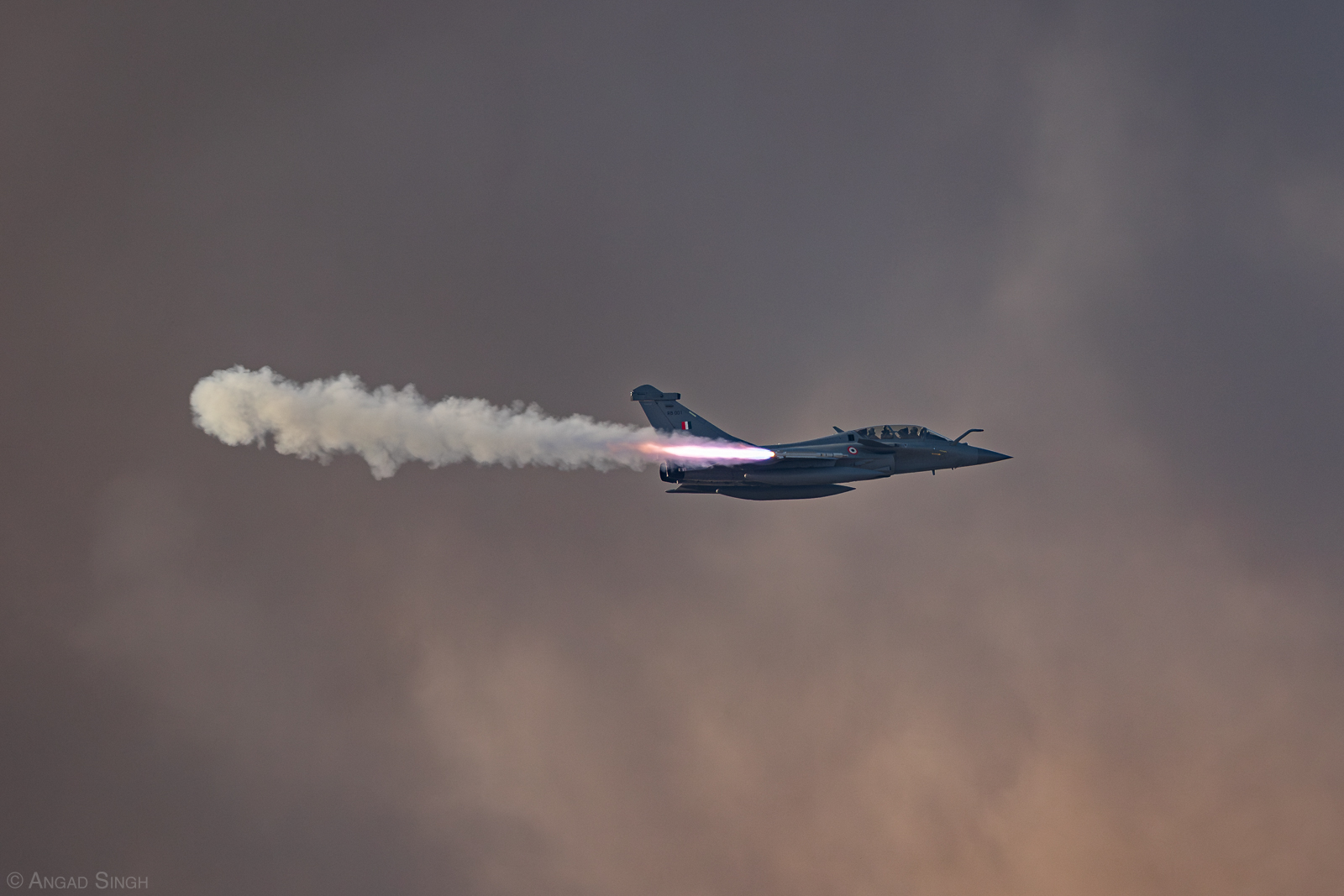
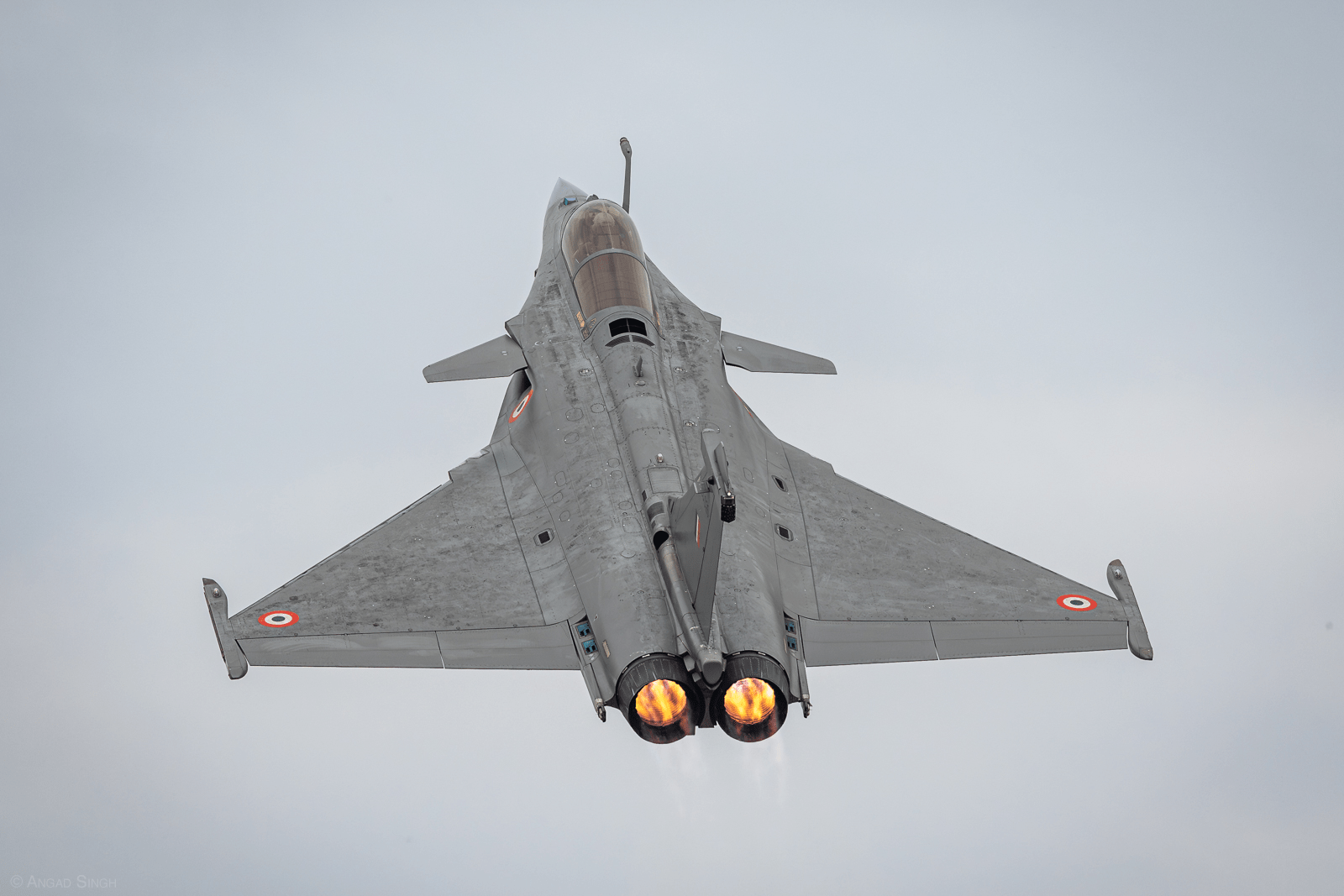
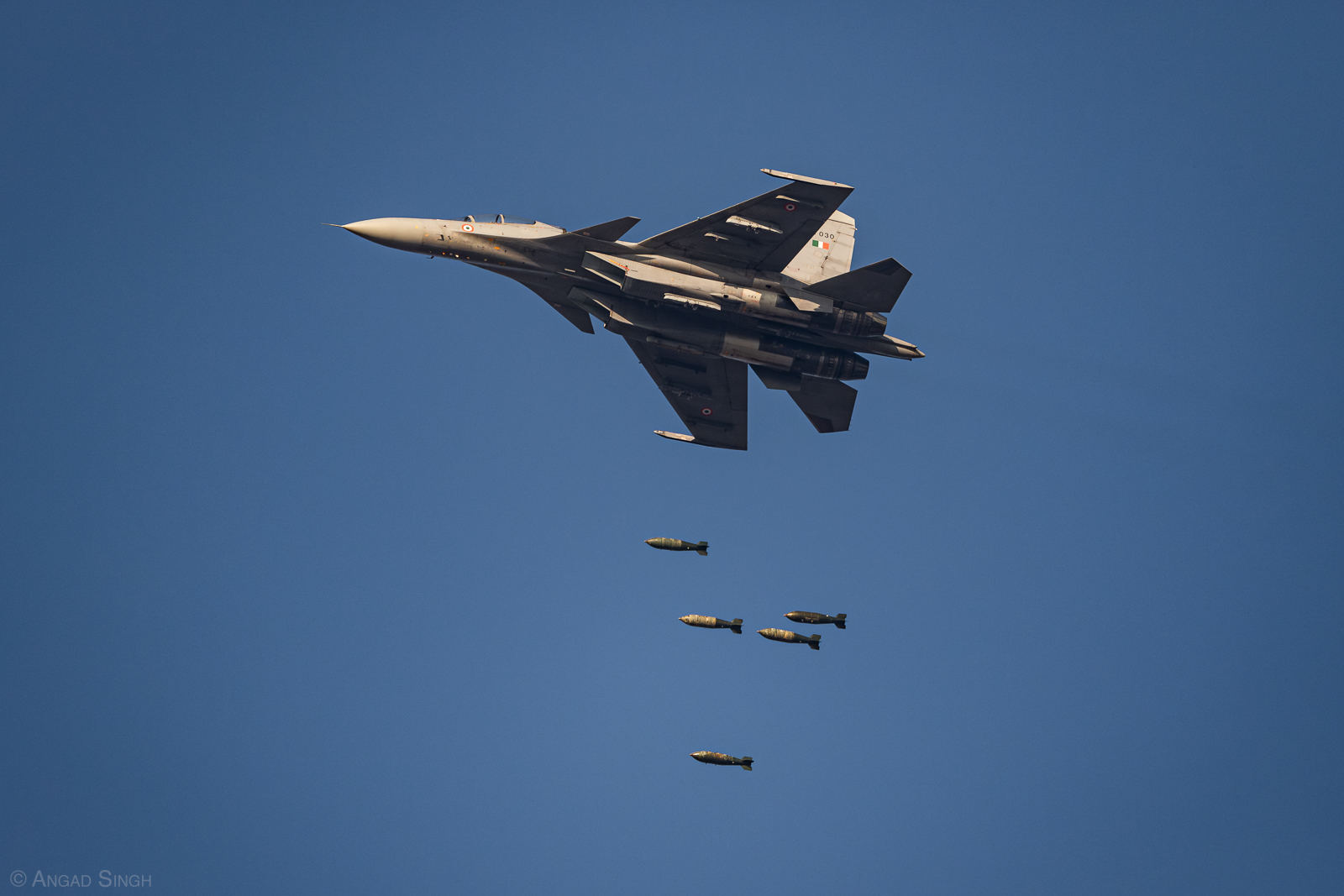
A pair of upgraded MiG-29s then rolled in from the west to drop a pair of FAB-500M-62 bombs each on another mock command-and-control target. Four BAE Systems Hawk trainers dove in next, with the lead pair delivering four 250-kilogram bombs on a simulated ammunition depot before the trailing duo chewed up a mock convoy with 68mm rockets. Two Su-30MKIs continued the dive attacks from the west, dropping 12 1,000-pound bombs on a runway target.
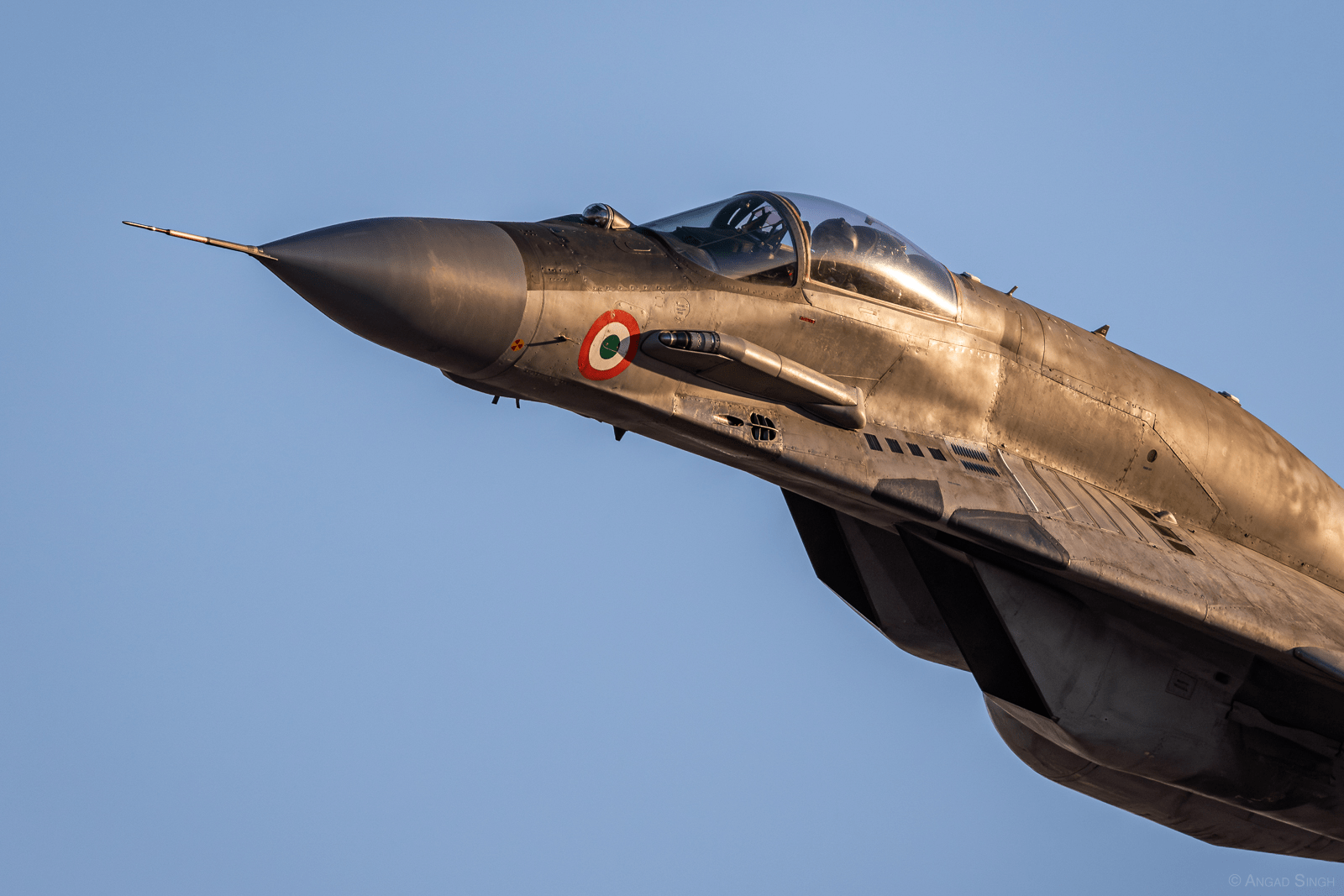
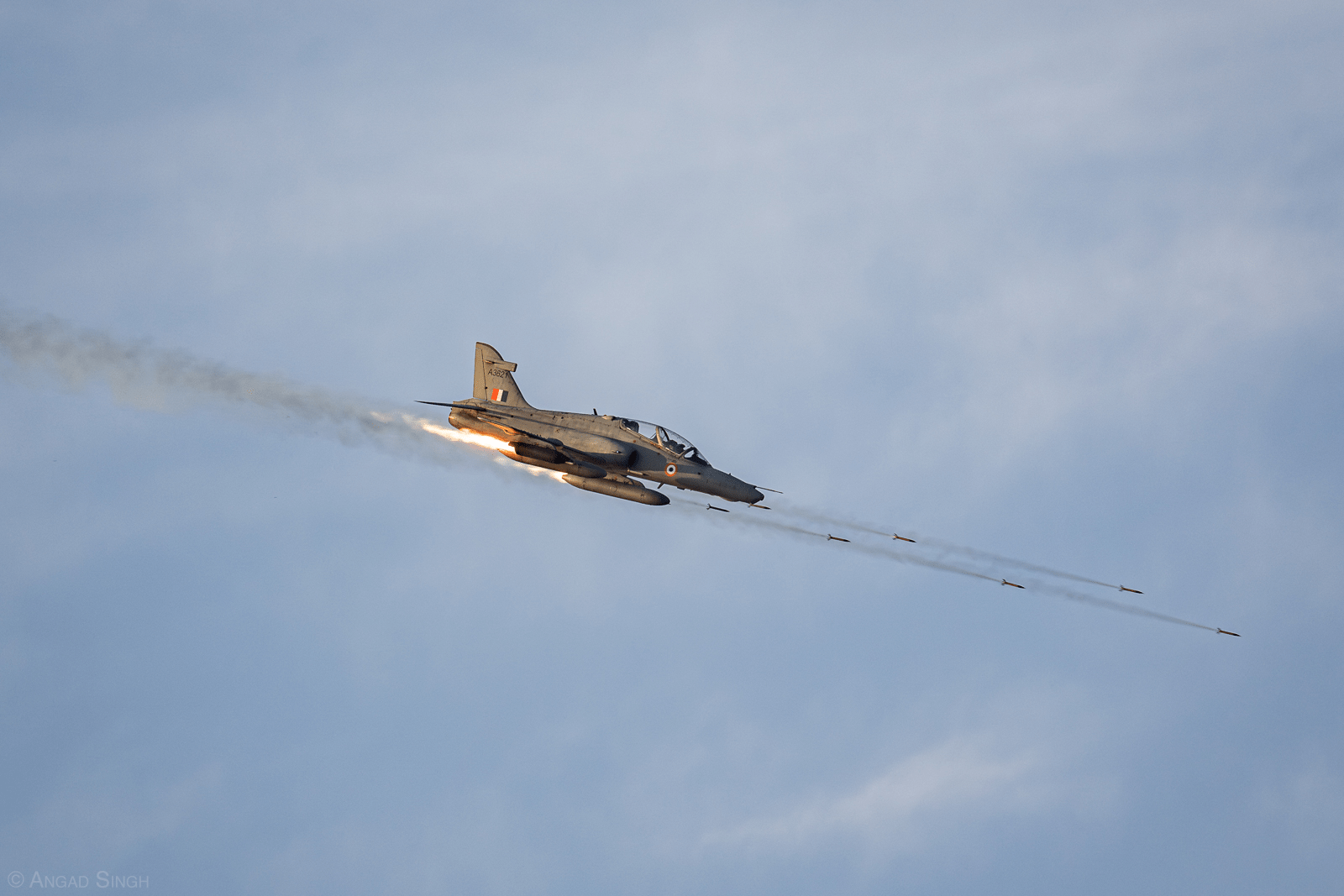
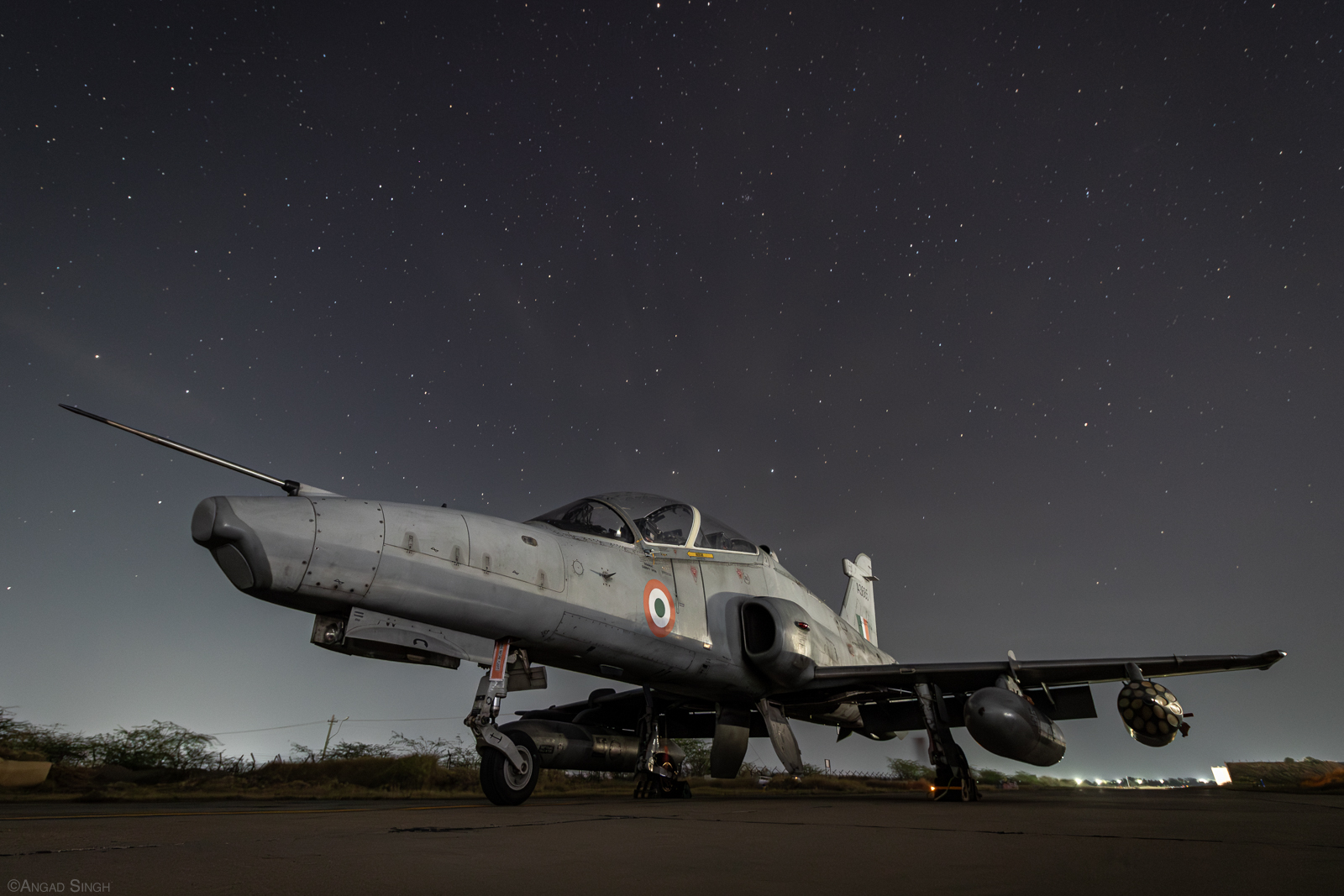
The Indian Army then made its Vayu Shakti debut with a pair of Rudra combat helicopters in a menacing all-black scheme rocketing a simulated tank convoy with 70mm projectiles. These were trailed by two IAF Mi-17-1Vs that fired 80mm S-8 rockets on a fuel dump target.
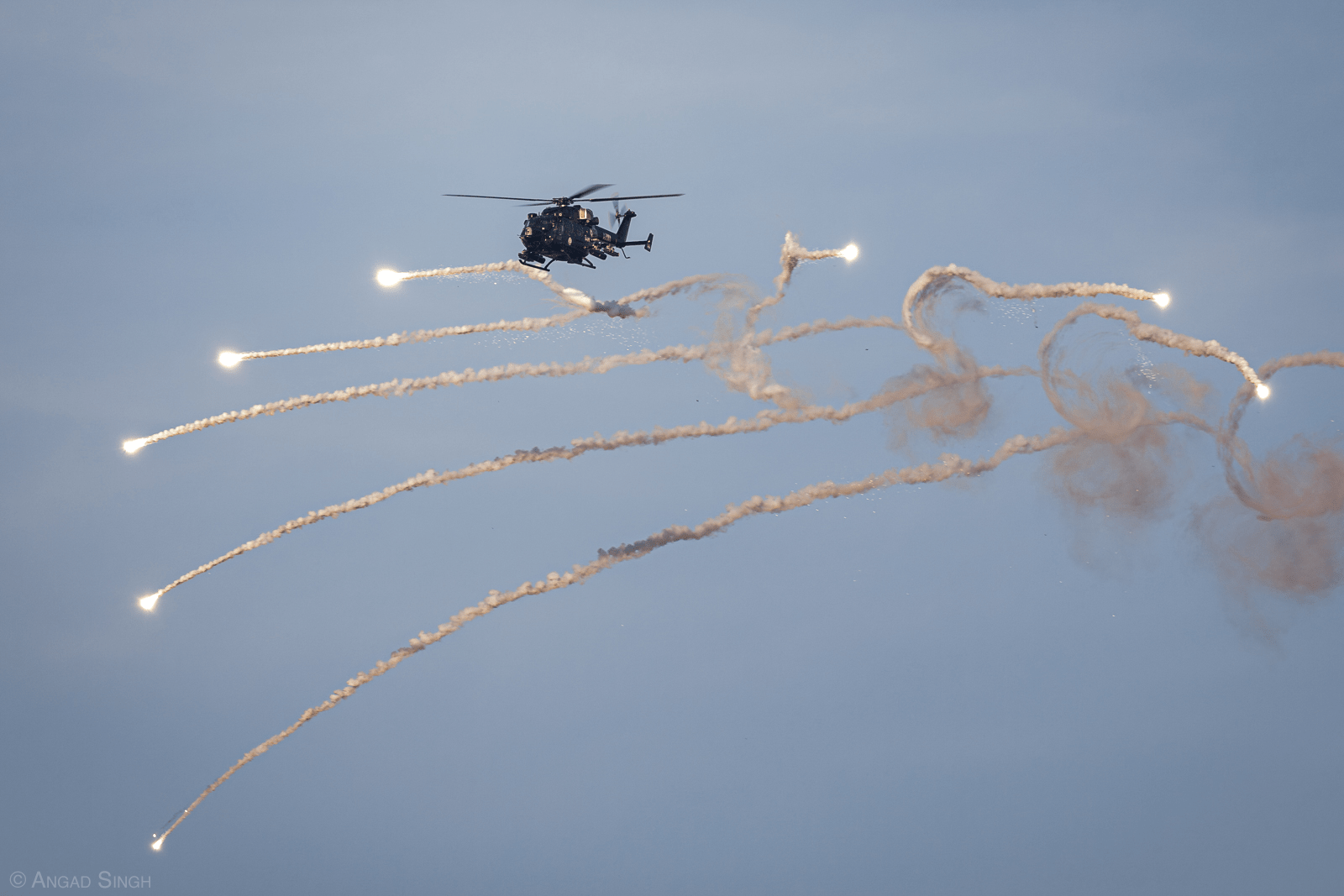
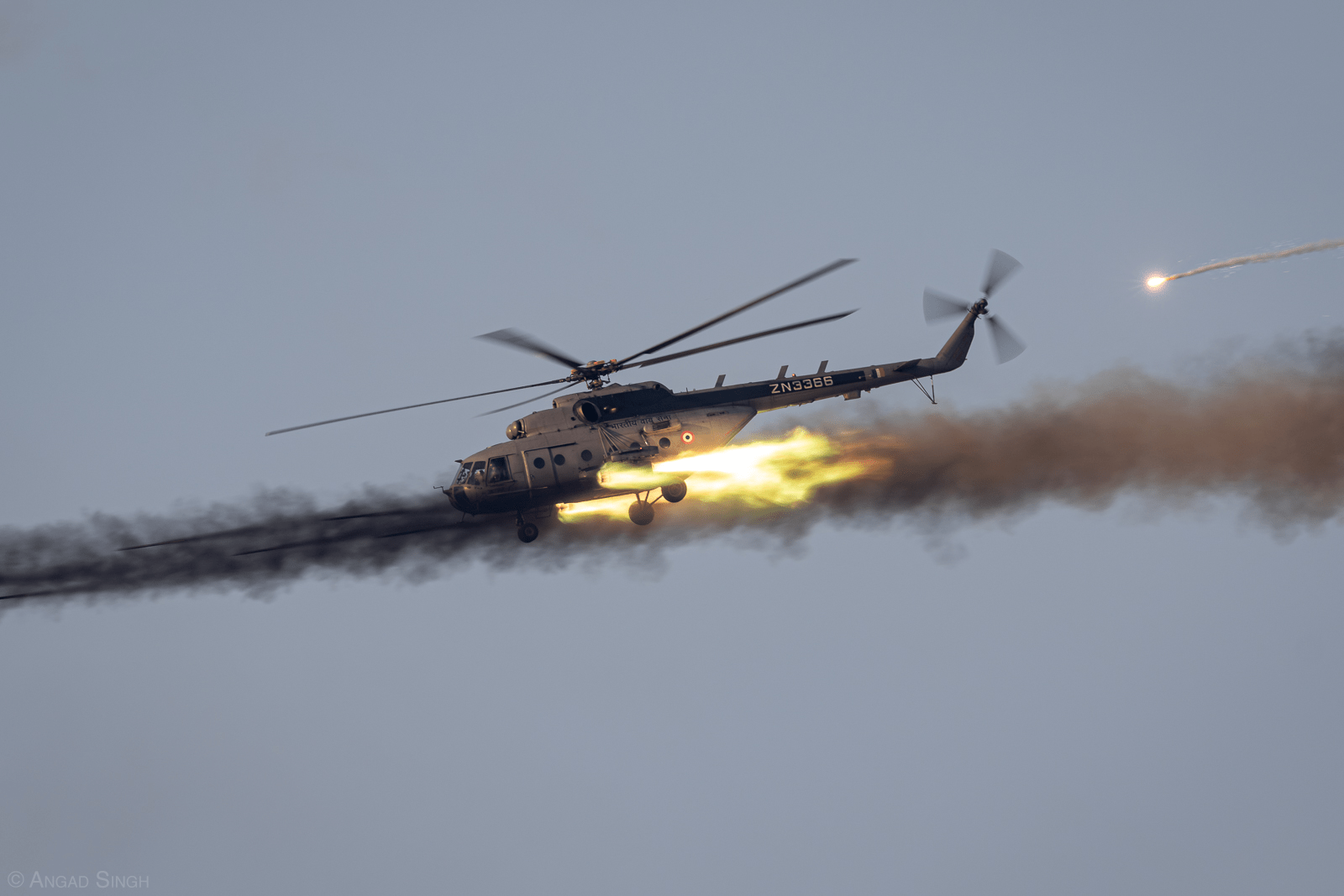
The Jaguars returned for a dive attack on a mock munitions plant, with a pair of DARIN II jets dropping six 1,000-pound bombs. This was followed by a ‘swing-role’ demo of the Tejas, a lone jet streaking in to fire an R-73 missile at a target drone before looping up and over into a dive to drop a single 1,000-pound bomb on an enemy logistics node. A pair of Su-30MKIs then closed out the day’s fighter action with 44 100-kilogram bombs plastering an area target to the east.
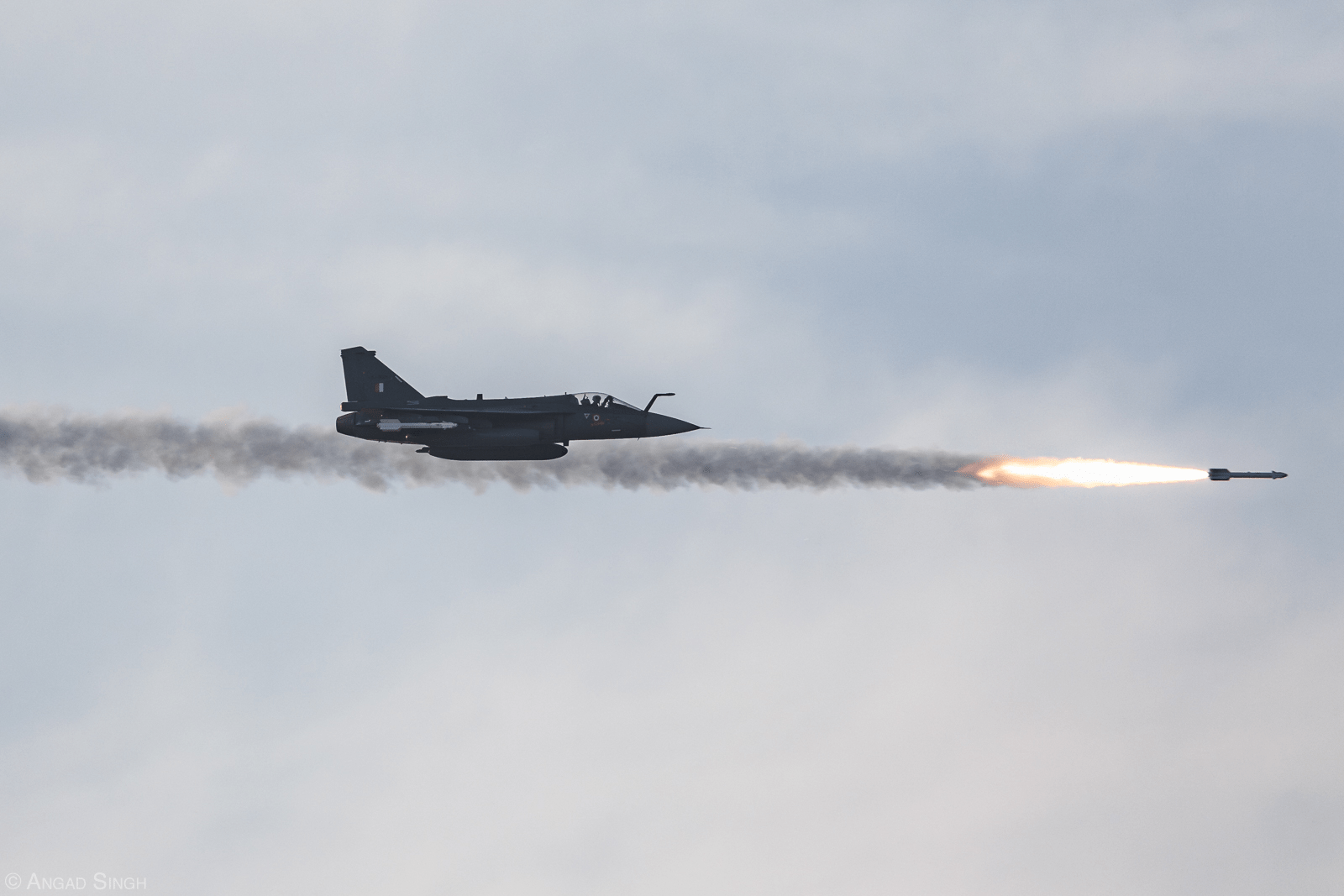
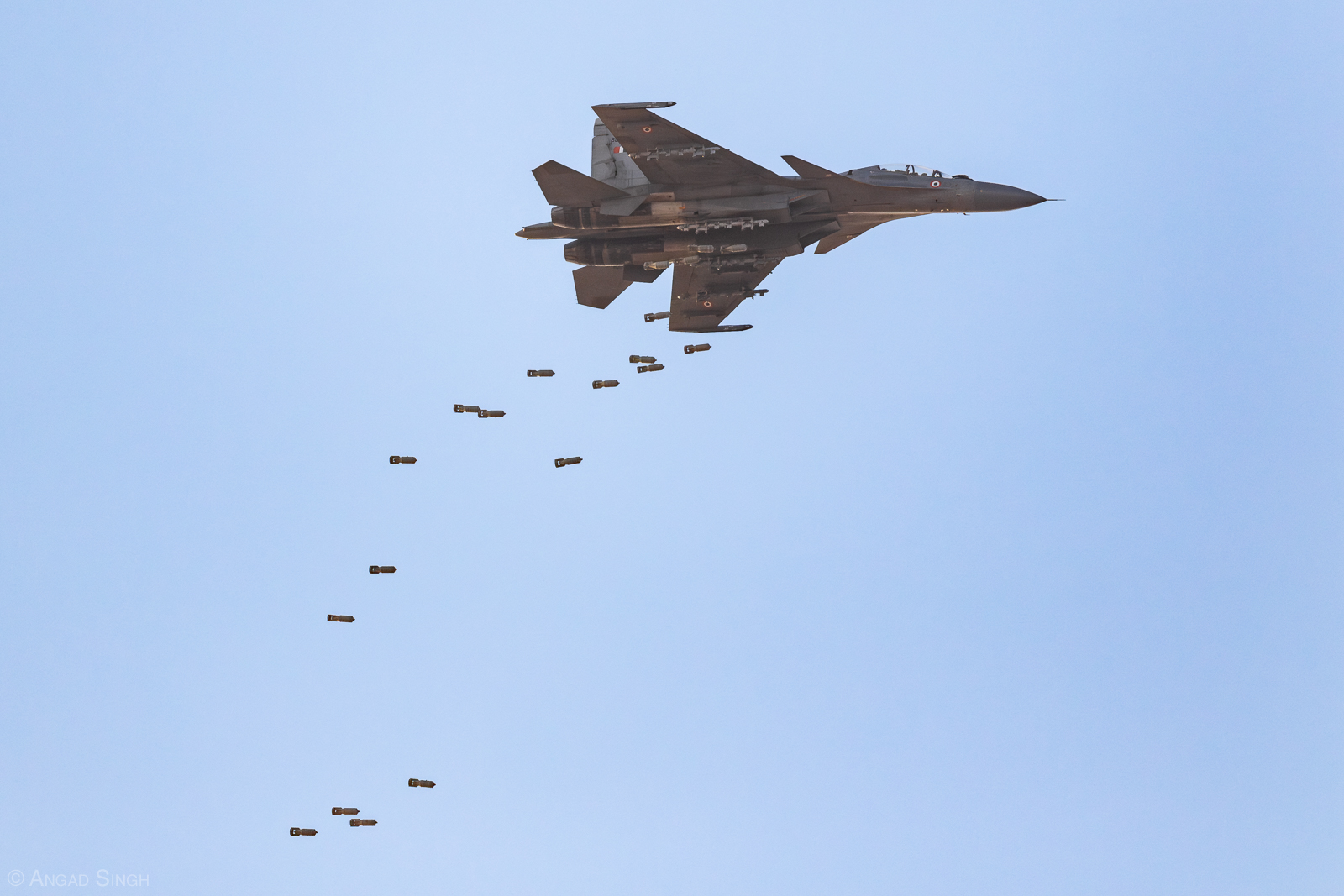
The sunset phase was dominated by helicopter and special operations, first with a pair of Apaches coming in at ultra-low level along the desert floor before popping up and firing a Hellfire each at simulated tank targets. These were followed by HAL Advanced Light Helicopter (ALH) Mk IVs strafing a forward rearming/refueling point with their 20mm chin guns.
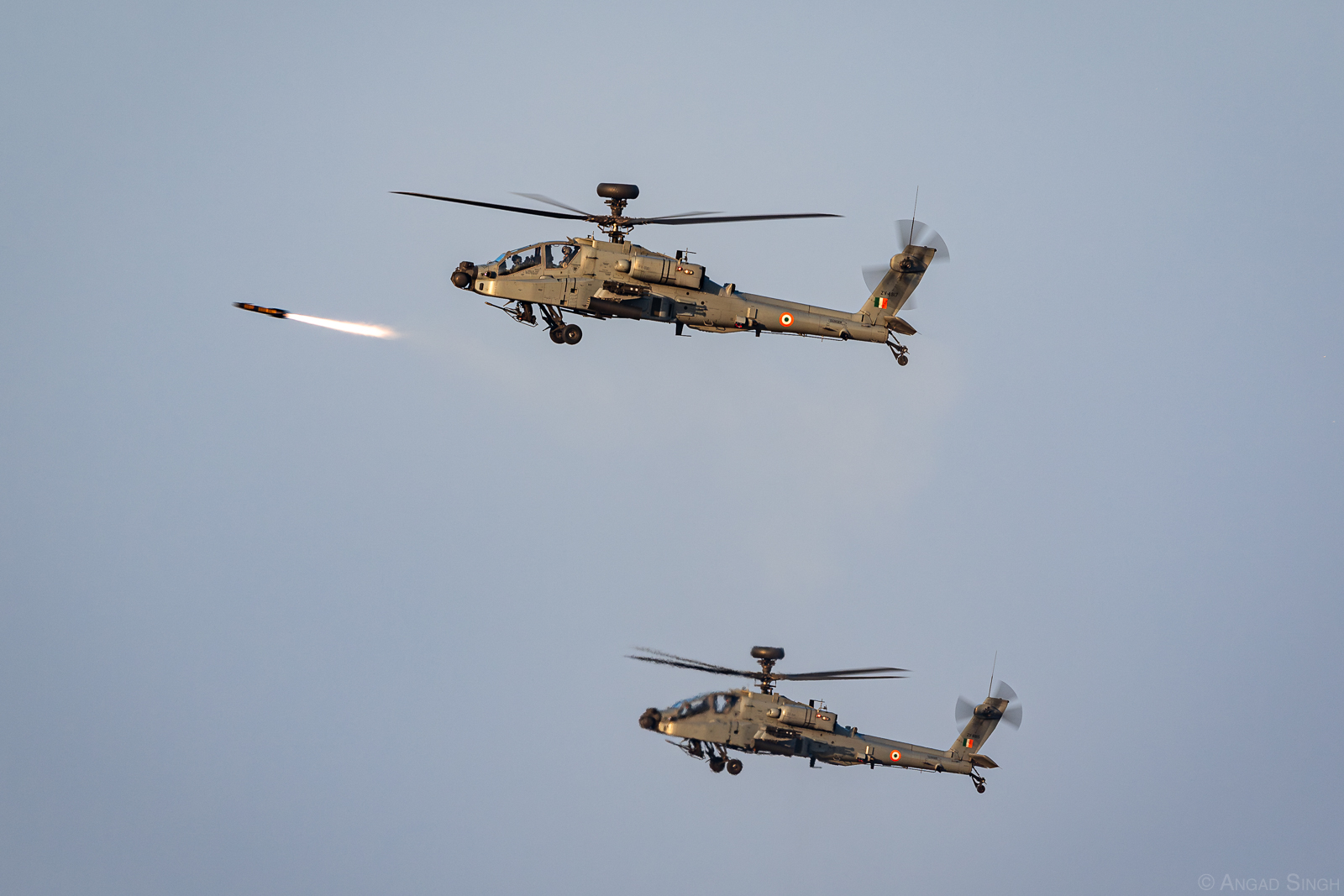
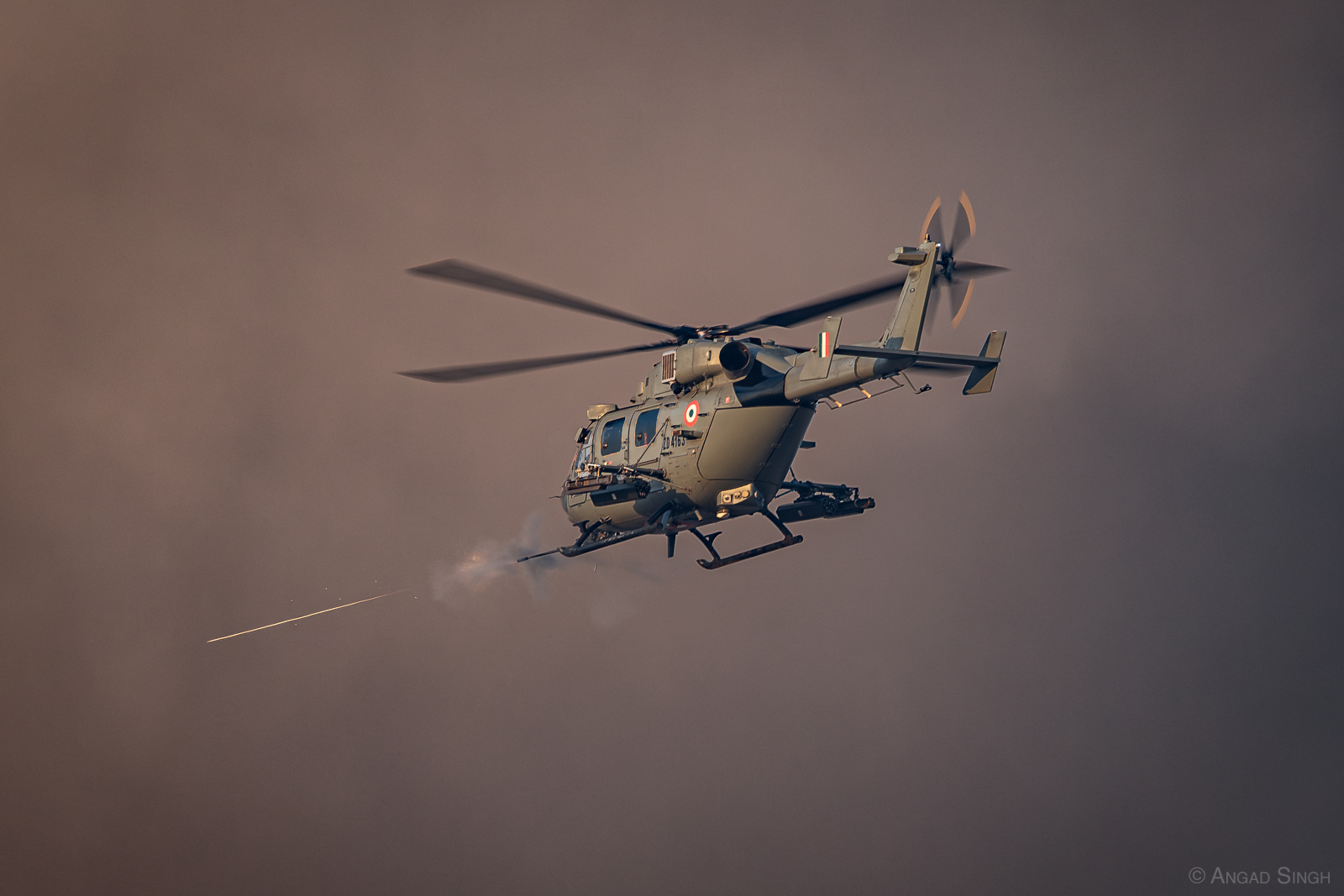
A single C-17 then flew in and demonstrated its container delivery system capability, with 10 palletized loads landing in front of the crowd moments before a C-130J roared overhead at just 300 feet, carrying out an assault landing as part of a special forces insertion demo. As the Super Hercules turned around and climbed back into the air, a pair of Chinooks appeared on the horizon, each carrying an underslung howitzer, which were delivered to the firing area near the grandstand and began setting up for the night-time demonstrations.
The final daylight strike was an air defense suppression demo by a loitering munition, an Israeli Harop drone, that dove in and destroyed a simulated radar site. As the sun set over the range, the SAMAR surface-to-air missile system swung into action, targeting a drone with its ground-launched R-73.
After a short break, the night phase of the exercise began with a heliborne special forces building intervention — one Mi-17 lit up a building with its searchlight as a second delivered its load of commandos, who first fast-roped onto the roof before rappelling down and through the windows to clear out enemy combatants. As the helicopters exited the area, a single C-130J appeared from the darkness and carried out a spectacular dump of all its flares.
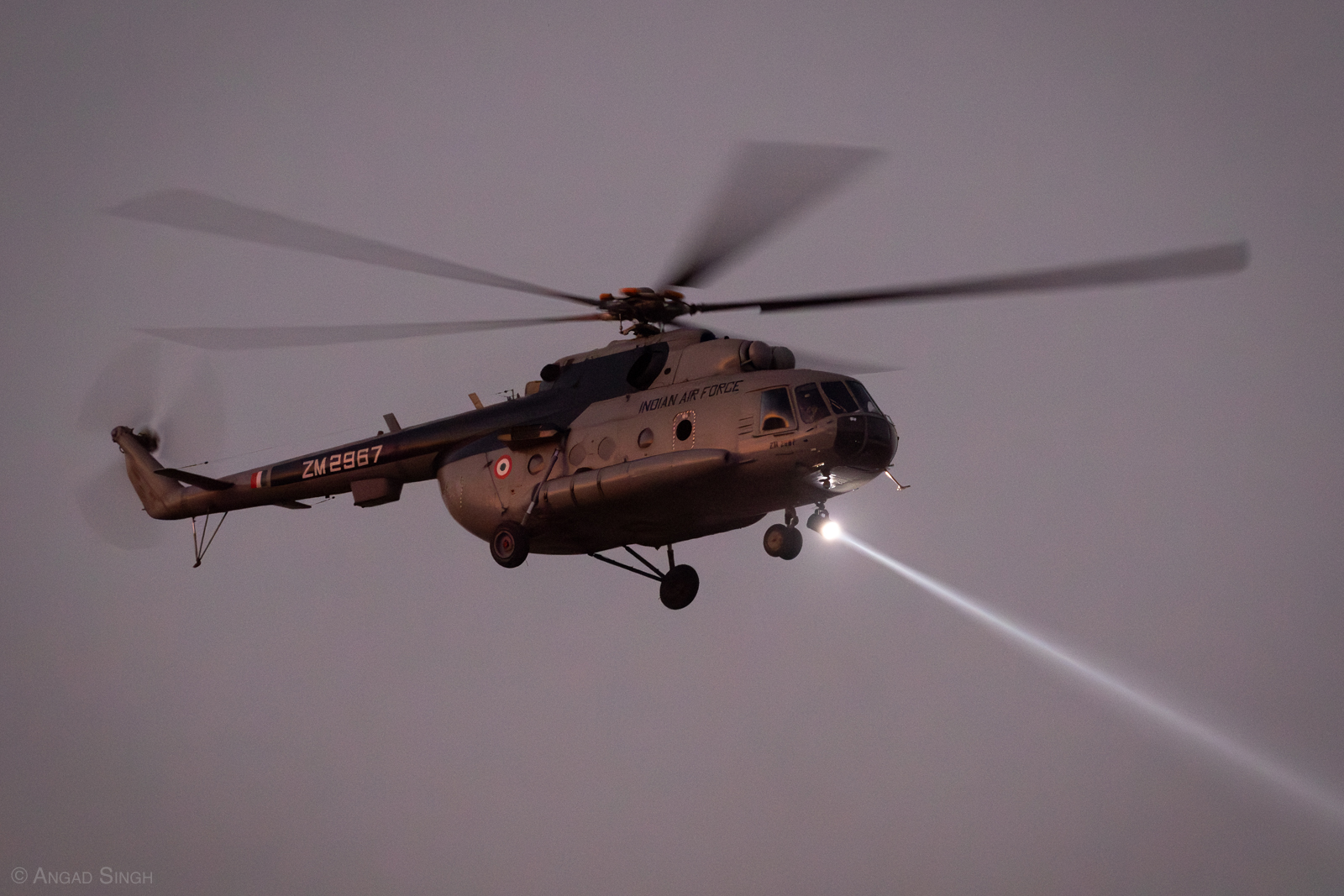
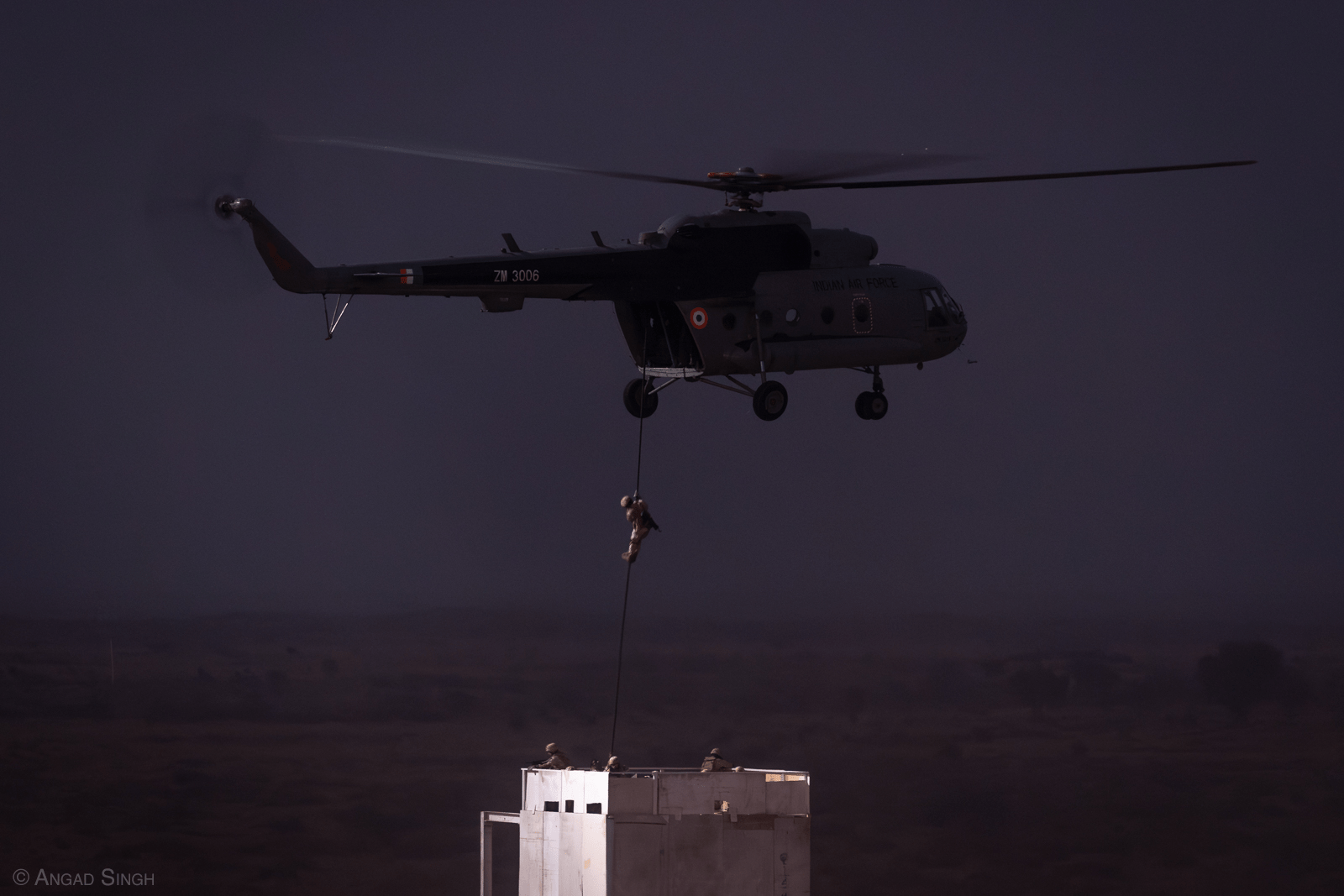
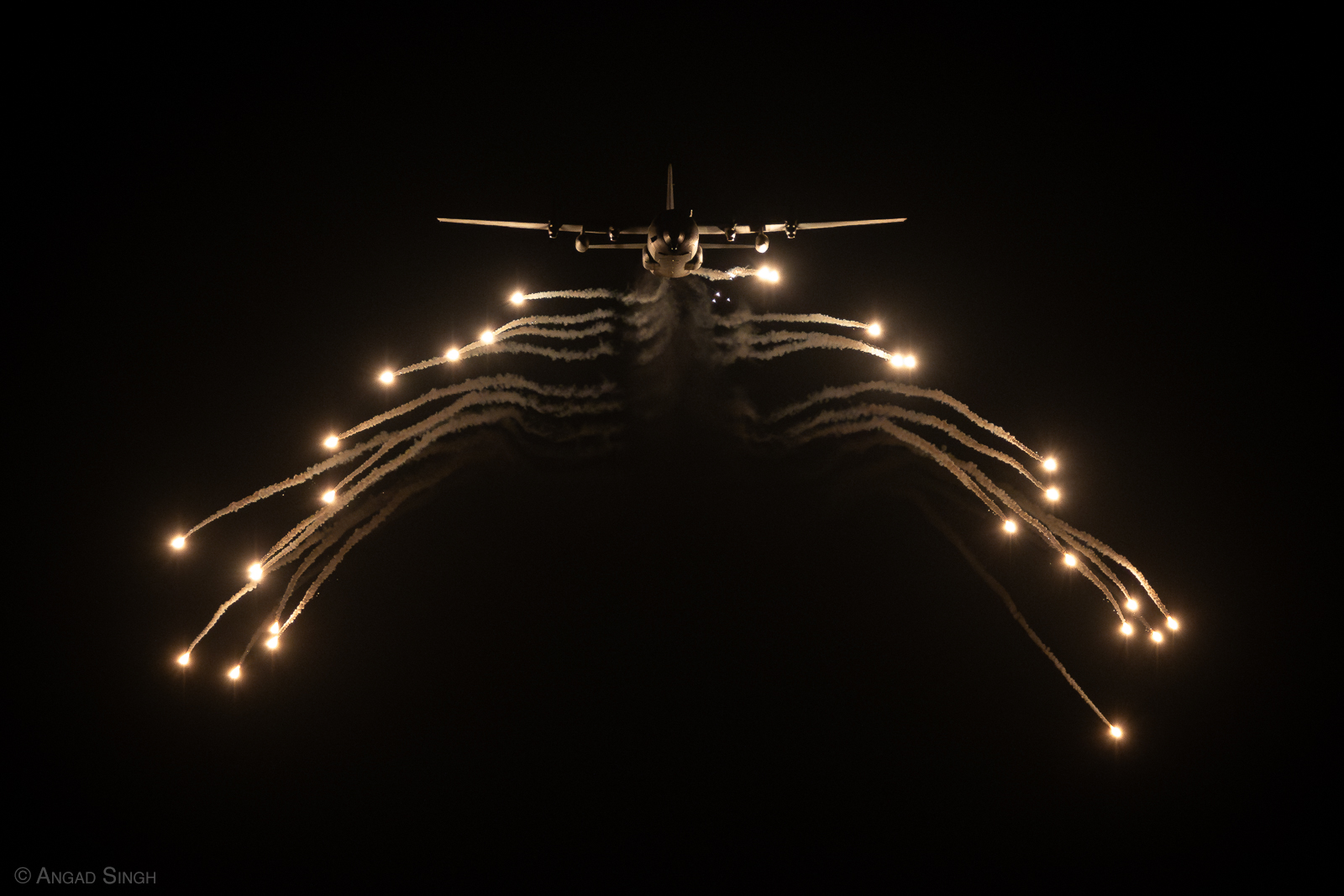
Next was a demonstration of the indigenous Akash surface-to-air missile system, which engaged a pair of drones in salvo-launch mode from two separate launchers controlled by a single engagement radar. This was followed by an artillery showcase from the M777s that had been air-delivered only half an hour earlier. The action then returned to the air, with a Prachand LCH carrying out rocket attacks in the pitch darkness, before making way for a newly upgraded DARIN III Jaguar to drop three 1,000-pound retarded bombs on a mock power plant.
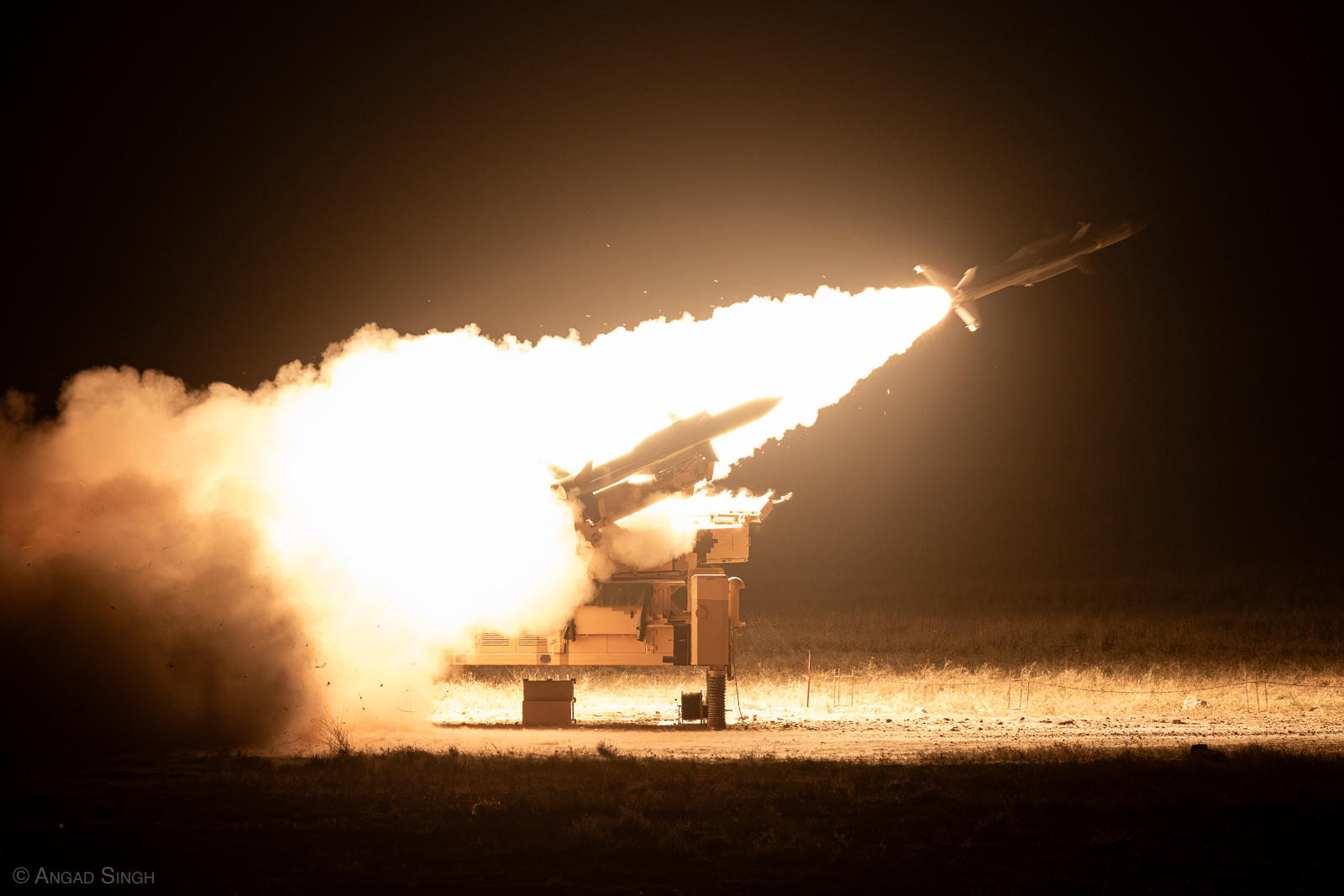
The finale of the night phase and the last strike of the exercise was delivered by the IAF’s mainstay — a lone Su-30MKI announced its arrival with flares from the night sky and 12 100-kilogram bombs in front of the grandstand.
There are very few places in the world where an air force shows off so many of its assets and the scope of its missions in a public demonstration — including live weaponry.
At the same time, the absence of the MiG-21 Bison at this year’s drills, and the growing importance of locally developed types, including the Tejas and different helicopters, provides an insight into the development of the IAF as well as the country’s capacity to build and field homegrown aircraft.
The kinds of high-tech adversaries that India might have to prepare to fight against in the future — chiefly China and Pakistan — demonstrate the critical need to modernize the Indian Air Force, a wide-ranging effort that has so far not proven easy. Overall, however, the modern platforms showcased at Vayu Shakti show that the challenges of modernizing the Indian Air Force are being addressed.
Contact the editor: thomas@thewarzone.com
